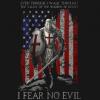
Radar Operation Guidelines in knowledgebase has missing images
By
streakeagle, in Thirdwire: Strike Fighters 2 Series - General Discussion

By
streakeagle, in Thirdwire: Strike Fighters 2 Series - General Discussion
By using this site, you agree to our Terms of Use, Privacy Policy, and We have placed cookies on your device to help make this website better. You can adjust your cookie settings, otherwise we'll assume you're okay to continue..